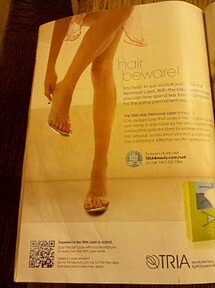QR codes are everywhere, but are they right for you?
January 5, 2012 1 Comment
During the holiday season, QR codes seemed to be everywhere, from store shelves to print and even online media marketing campaigns. And in theory, it’s easy to see why: the square two-dimensional bar codes can be scanned using smartphone apps, enabling on-the-spot access to specific online information about products or brands.
But despite their ubiquity, usage of QR codes and other 2D bar codes lags behind the proliferation of technologies available to create them. According to industry researcher Forrester, usage of 2D bar codes has quadrupled in the past year, but still only represents 5% of mobile phone owners overall. Even among smartphone owners, just 15% have scanned 2D bar codes, Forrester found.

So while it’s tempting for merchants to jump on the QR bandwagon — they sure look cool, don’t they? — it’s imperative to fit QR code promotions into a larger mobile strategy that’s tailored to your brands audience. We’ll take a comprehensive look at mobile trends for 2012 after the New Year; meantime, when weighing whether to add QR promotions to the first-quarter to-do list, consider:
- Your demographics. Not only should your target audience include plenty of smartphone owners, but Forrester also found that 2D barcodes appealed primarily to Gen Y and Gen X consumers — 66% of those who had scanned a 2D barcode were between the ages of 23 and 45. More affluent consumers are likewise more apt to have tried 2D scanning, with 62% earning $70,000 per year or more annually.
- Your state of mobile readiness, online and off. Most QR codes send shoppers to a landing page, be it in-depth information about a product, or a call to action such as subscribing to email updates. Whatever the target content, it should be optimized for mobile — a piece of advice that ought to go without saying, but in practice bears repeating. Forrester found that about only about half of 2D code targets were mobile-friendly. For example, this print advertisement from a beauty manufacturer links to a video in Flash, which isn’t widely supported on mobile platforms — potentially frustrating readers who were interested enough to scan the code.


Even if you plan to use QR codes exclusively in a bricks-and-mortar location where consumers can buy in person, it’s key to provide other product-related functionality — such as the ability to send product information to a friend and share on social networks. It’s also important to train in-store staff to use QR codes so they can assist customers who have questions about the process.
And if you want to use QR codes to boost online purchasing, you should prioritize making your mobile site transaction-enabled if it isn’t already. Add that functionality first before using QR codes to promote products. Otherwise, scanning a QR code may lead shoppers to a dead end.
- Your product offering. QR codes can boost the convenience factor for consumers shopping for certain products, including:
-
- Feature-rich products. Whether shopping for appliances, computers, jewelry or running watches, consumers are likely to want to access detailed specifications before committing to purchases — making a quick QR code link an ideal way to give them the information they need on the go. Post-purchase, QR codes can quickly connect buyers to detailed product manuals and to customer support resources.
- Products with built-in replenishment timelines. Merchants selling everything from moisturizer to windshield wiper blades can facilitate reordering by including QR codes on packaging or in email reminders to buyers. The QR codes boost convenience for consumers, who don’t have to remember specific part numbers, the right battery size the gadget needs, or which tint of makeup they originally chose (was it Bronze Glow or Bronze Dawn?).
If you’ve tried them, what QR code promotions have worked for your business?
Pingback: Surprising Sentiment about Mobile Payments and Commerce in … | Near Field Communication (NFC) / Smart mCommerce